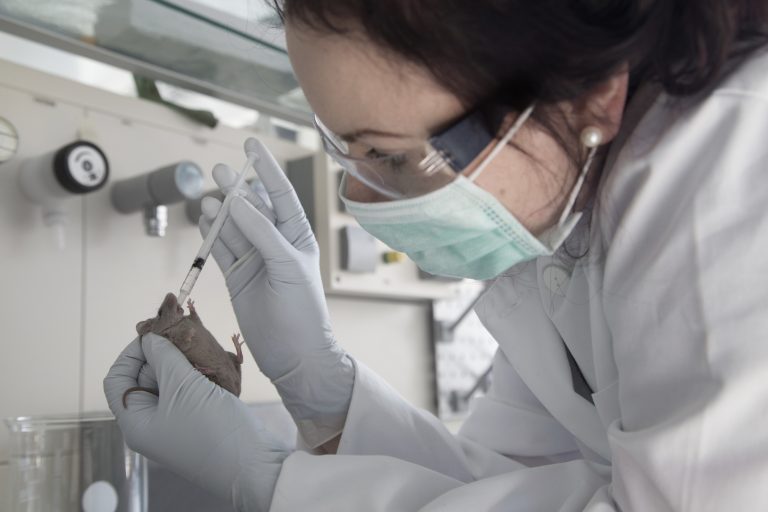
A new preclinical model by scientists at Weill Cornell Medicine and Children’s National Hospital allows for the study of long-term HIV infection and the testing of new therapies aimed at curing the disease.
HIV is a human-specific pathogen that does not cause disease in other species, although it can replicate in chimpanzees. HIV cannot infect mice, rats, rabbits, or macaques. Previous HIV mouse models have used mice that carry human stem cells or CD4 T cells, a type of immune cell that can be infected with HIV. However, the human cells soon perceived the tissues of their mouse hosts as “foreign,” and attacked.
The new study is published in the Journal of Experimental Medicine in a paper titled, “A participant-derived xenograft model of HIV enables long-term evaluation of autologous immunotherapies.”
“HIV-specific CD8+ T cells partially control viral replication and delay disease progression, but they rarely provide lasting protection, largely due to immune escape,” wrote the researchers.
The new mouse model, developed by scientists at Weill Cornell Medicine and Children’s National Hospital, overcomes this challenge by using a subset of human CD4 cells that mostly excludes the cells that would attack mouse tissue.
“We expect this to be a valuable and widely used tool for studying the basic science of HIV infection, and for speeding the development of better therapies,” explained co-first author Chase McCann, Ph.D. At the time of the study, McCann was a Weill Cornell Graduate School student in the laboratory of senior author Brad Jones, PhD, an associate professor of immunology in medicine in the division of infectious diseases at Weill Cornell Medicine. McCann is now the cell therapy lab lead in the Center for Cancer and Immunology Research at Children’s National Hospital in Washington, DC.
“Here, we show that engrafting mice with memory CD4+ T cells from HIV+ donors uniquely allows for the in vivo evaluation of autologous T-cell responses while avoiding graft-versus-host disease and the need for human fetal tissues that limit other models,” noted the researchers.
The lack of good mouse models has hindered the development of new therapies.
The researchers demonstrated that the cell-attacks-host problem found in prior mouse models is due to so-called “naïve” CD4 cells. When they excluded naïve CD4 cells and instead used only “memory” CD4 cells, the cells survived indefinitely in the mice without causing major damage to their hosts.
The researchers observed that the human CD4 cells also could be infected and killed by HIV, or protected by standard anti-HIV drugs in the same way that they are in humans. These results suggest their model, which they termed “participant-derived xenograft” or PDX mice, served as a workable model for long-term HIV infection.
They then used the new model to study a prospective new T-cell-based therapy. They put memory CD4 T cells from a human donor into the mice to permit HIV infection, and then, after infection was established, treated the mice with another infusion of human T cells, called killer T cells. The killer T cells were from the same human donor and could recognize a vulnerable structure on HIV, and they attacked the virus wherever they found it within the mice.
To boost the killer T cells’ effectiveness, the researchers supercharged them with a T cell-stimulating protein called IL-15. The virus ultimately evolved to escape recognition by the killer T cells. However, the new model allowed the researchers to monitor and study this long-term infection and viral escape dynamics in greater detail.
“I think that the major impact of this model will be its acceleration of the development of T-cell-based therapies that can overcome this problem of viral escape,” Jones added.
“This ‘participant-derived xenograft’ model of HIV provides a powerful tool for studying HIV-specific immunological responses and facilitating the development of effective cell-based therapies,” concluded the researchers.













